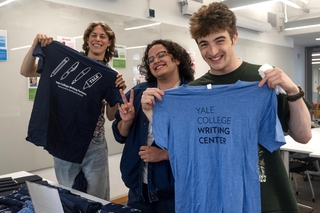But beyond the risk of penalties, there are urgent moral and intellectual reasons to avoid plagiarism. When you write for an academic audience, you’re joining an ongoing conversation. When you plagiarize, you join that conversation on false grounds, representing yourself as someone you are not. What is more, the act of stealing another’s words or ideas erases your voice. It may be difficult to think of yourself as making an original contribution in the context of a class taught by an expert. But every assignment is an invitation to add something new to the conversation sparked by the course. You cannot make an original contribution if you are not the owner of the words and ideas that you present.
Plagiarism takes many forms, but it falls into three main categories: using a source’s language without quoting, using information from a source without attribution, and paraphrasing a source in a form that stays too close to the original. There are variations on these categories that you may not be familiar with, so see the When You Must Cite section for a fuller discussion of the rules and see the Fair Paraphrase section for a discussion of how to use a source’s idea in your own argument.
You must always make clear in your written work where you have borrowed from others—whether data, opinions, questions, ideas, or specific language. This obligation holds whether the sources are published or unpublished and whether they are in print or on the Internet. When in doubt, be sure to check with your instructor about how to acknowledge sources in your papers, especially since every academic discipline has its own conventions. Submitting AI generated language without attribution is a newer and—for many instructors—especially pernicious form of plagiarism. If you use AI to help with an assignment, be transparent about how you used it and make sure your use of such tools is permitted by the specific course policies.





